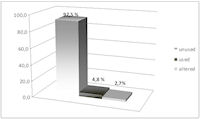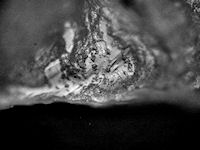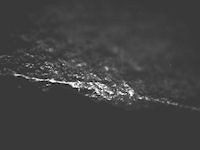
Figure 10: Relative frequencies of used, unused and altered pieces
One of the most striking results obtained from the analysis of the March Hill lithic collection is the high frequency of unused artefacts (Fig. 10). Within the studied assemblage, 92.5% (N=912) did not exhibit recognisable use-wear traces; there was no formation of micropolish areas and the higher parts of the microtopography near the edges appeared unmodified. Moreover, the edges looked fresh and neither edge-rounding nor edge-damage has taken place in the greater part of the pieces.
Some of the artefacts (2.7%: N=27) showed post-depositional surface modification that prevented us from assessing whether or not the piece had been used. This group exhibited soil sheen that appeared as bright continuous lines along the edges, the ridges and on the higher portions of the lithic surfaces that came into contact with the sedimentary matrix first. Many authors have pointed out that this sheen constitutes a previous stage to the formation of patinas and it occurs when the concentrations of chemical agents are too weak to infiltrate into the fissures or holes of the rock (Rottlander 1975; Lévi-Sala 1993). Several artefacts also appear to have been burned.
Of the sample examined, 4.8% (N= 47) showed visible wear from use. The most commonly used motion, represented by some 85.1% of the sample, was cutting/sawing, followed by 8.5% of the sample that exhibited scraping (or transverse motions), and in the remaining 6.4% of the assemblage it was impossible to determine the kinematics of the tool.
According to our observations, the working of bone (Figs 11 and 12) and processing of hard materials were the most common tasks performed at the March Hill settlement (see Table 1). For hard materials, the traces are not developed enough to offer more accurate definitions. Almost all the tools carried out sawing activities. In contrast, wood (Fig. 13) and hide working, as well as soft materials working, are represented by only one example used in a transverse motion.



Figure 11: (left) Use-wear traces produced by bone cutting. Magnification x200
Figure 12: (middle) Use-wear traces produced by bone cutting. Magnification x200
Figure 13: (right) Use-wear traces produced by wood scraping. Magnification x200
| Use-wear results | Motions | ||
|---|---|---|---|
| Worked materials | Longitudinal | Transverse | Undetermined |
| Bone | 7 | - | - |
| Wood | - | 1 | - |
| Hide | - | 1 | - |
| Hard material | 11 | - | - |
| Soft material | - | 1 | - |
| Undetermined | 22 | 1 | 3 |
| Total | 40 | 4 | 3 |
The rest of the artefacts (45%) did not exhibit clear enough traces to allow identification of contact material. Two factors may account for this problem: a) these artefacts were used for a short time only; b) they were affected by post-depositional processes which masked the use-wear features. In fact, it does appear that the formation of use-wear traces is a dynamic process resulting, in part, from the amount of time invested in undertaking a task. Each kind of worked material required a different length of time to establish their diagnostic patterns. Moreover, micropolishes resulting from different worked materials exhibit diverse levels of resistance to the attack of environmental factors (Plisson and Mauger 1988). All these factors may have produced or contributed to our results. Future studies of sedimentary matrix could shed further light on this subject.
Due to the small number of pieces with use-wear traces, it is difficult to assess the correlation between the context of use of lithic implements and their morphology. However, this does not detract from the validity of the technique but does highlight the need for a stone tool series with a higher level of utilised stone tools than exhibited at March Hill. This problem may perhaps have been reduced had the entire collection been suitable for analysis. Despite these complications, the results obtained from the March Hill assemblage are of interest.
The most remarkable result from this analysis is perhaps the high frequency of unused artefacts in the collection. Almost all of them are unretouched flakes or of very small size and they are likely the result of edge configuration. There may be good reasons to suggest that the March Hill inhabitants developed a provisioning strategy (sensu Khun 1992) and that they were producing tools that could, and likely would, be used elsewhere. It is perhaps justifiable not only to think of March Hill as an isolated site but also as part of a wider chain of sites that made up part of the life of prehistoric people. Further analysis from other sites could begin to tease out relationships between sites that a targeted approach may have missed.
Of those tools that have been used, two use-processes are identified clearly: the cutting of bone and the cutting of hard material. Although the size of both samples is very small, in a previous application of the method (an assemblage from the 19th century with an excellent level of conservation), the number of tools for bone working was 762, or 3.66% of the total assemblage of some 20,814 artefacts (Briz in press); this ratio is lower than that observed in the March Hill sample. This result leads us to think about accurate scales to make statistical inferences in form-function research and to offer an identification of the dynamics of used edges.
The tools used for cutting bones do show some patterns:
In the case of tools for hard material, the patterns are:
A more thorough assessment of the activities performed at the site requires further study of artefact distributions, something currently ongoing. Nevertheless, these initial results provide some grounds for optimism with regard to the importance of the proposed method in developing insights about the dynamics of past societies, and providing answers to associated questions.
© Internet Archaeology/Author(s) URL: http://intarch.ac.uk/journal/issue26/29/7.html
Last updated: Wed Jul 29 2009